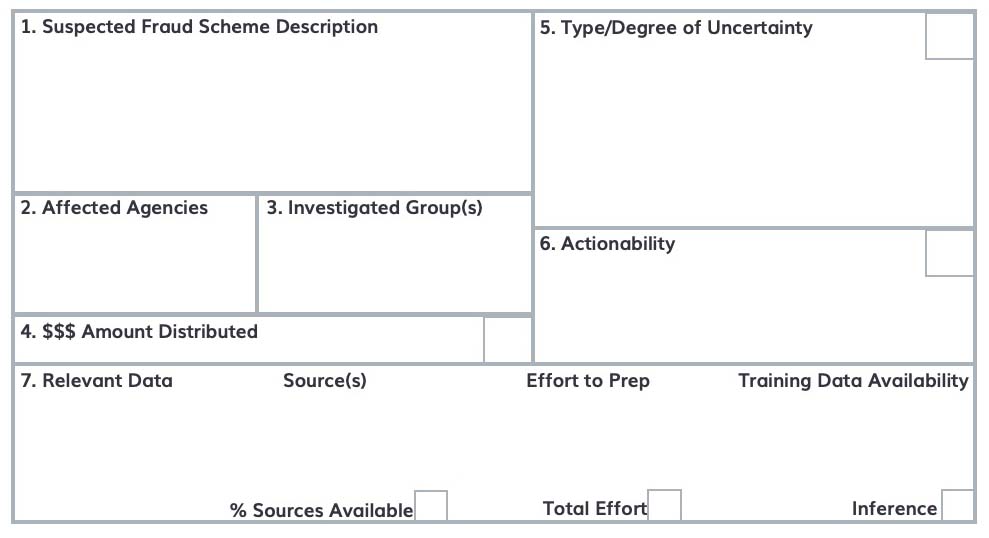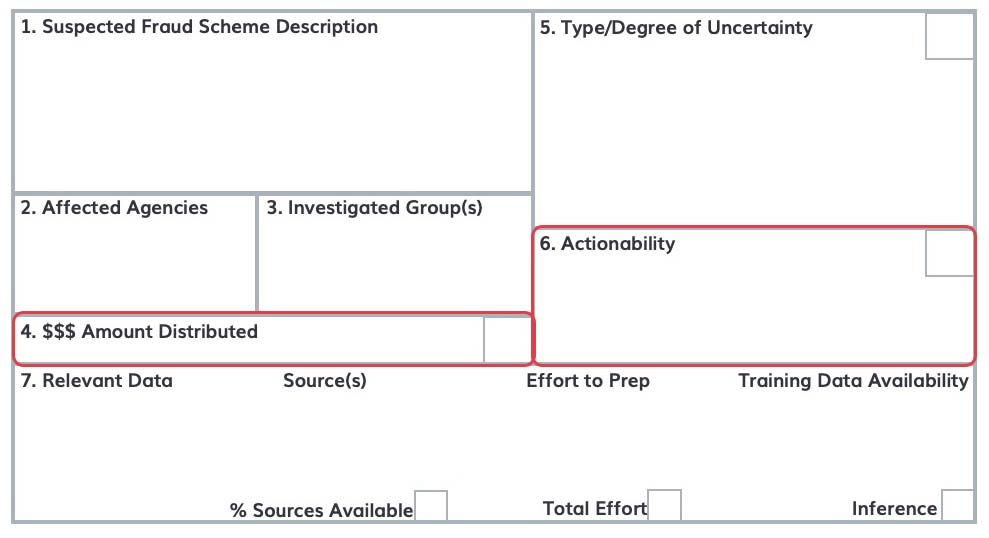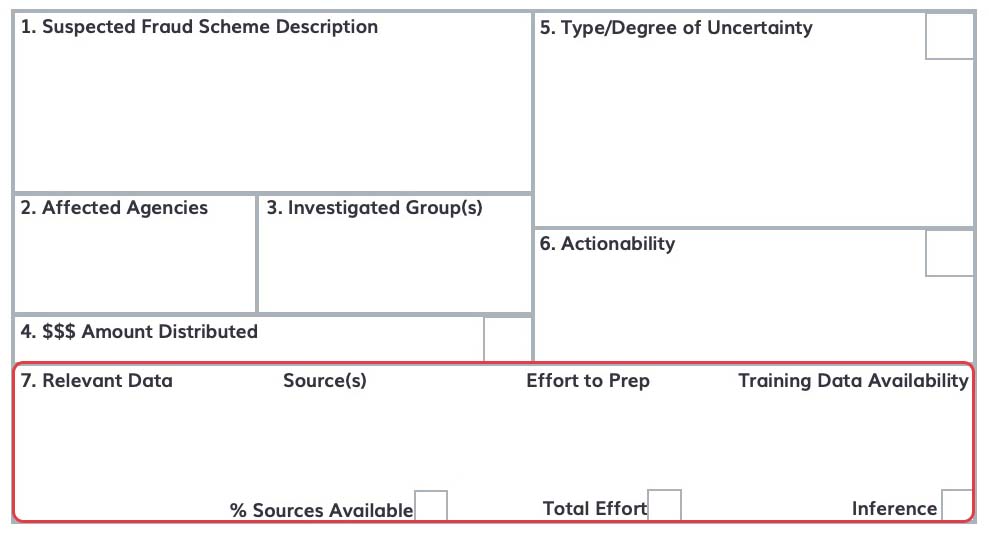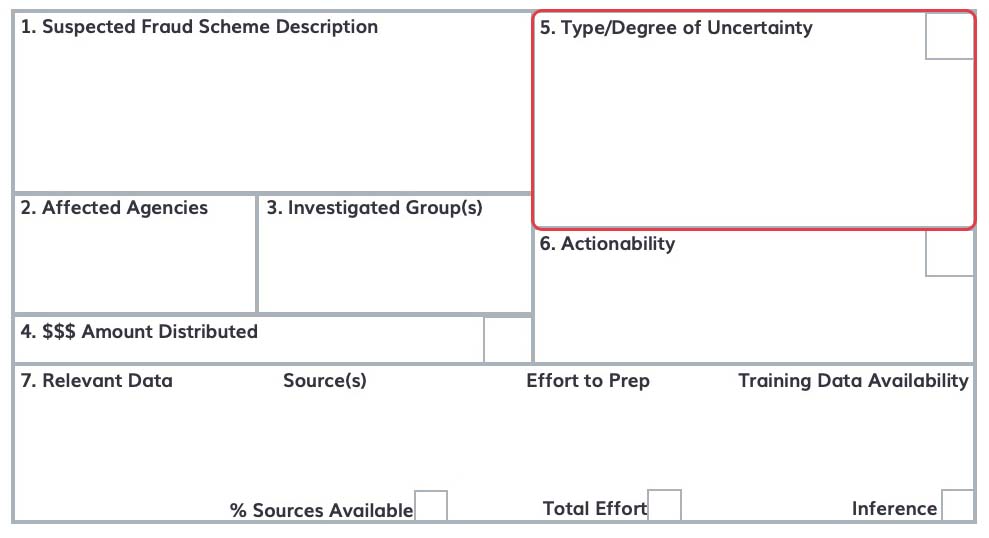To build valuable artificial intelligence/machine learning (AI/ML) solutions, it is essential to have a clear understanding of business needs and success criteria. This can be accomplished by gathering information about user needs, exploring the potential of available data to fulfill them, and using this learning to validate or refine solution concepts upfront—before the project moves forward into time- and cost-heavy territory.
AI Framework: Idea Refinement Loop
As we mention in the Agile for AI blog, AI projects inherently have a lot of unknowns and uncertainties. Some of them can be mitigated early on through systematic solution refinement in the Ideation and Exploration phases of our AI framework. In these phases, we first expand our set of possible solutions, and then narrow those possibilities to focus on the few best options.
Ideation Phase: Creating Options
An Ideation Phase serves to identify the best AI solution alternatives. It deliberately broadens the set of possible options by clarifying and analyzing the overarching business goal—like reducing financial losses from fraud—and identifying alternative ways of meeting it.
One common, but often suboptimal approach is to quickly select a single solution and unnecessarily constrain an approach too early. This locks the team into a narrow path that can end up being difficult to adapt and adjust. Ideation creates a set of alternatives in case the initial approach hits an unanticipated dead end, which is not uncommon in AI efforts. If that occurs, we can use what we’ve learned to refine our remaining options and continue moving forward.
The process of ideation can be as simple or involved as the context warrants. Examples range from group brainstorming to facilitated workshops with diverse stakeholders, to quantitative analysis of existing problem data.
Exploration Phase: Using a Lean Canvas to Refine AI Solution Ideas
Regardless of the specific process, it is essential to define how to compare options from the Ideation phase and what we need to learn to do so. After completing many AI projects, our Excella team has discovered that taking a lean startup approach and using a lean canvas is the most effective way to create more effective solutions.
What is a Lean Canvas?
A canvas, in this context, is a lean management tool used to visualize opportunities. Our AI lean canvas is similar to popular canvas formats like the lean canvas by Ash Maurya or the business model canvas by Alexander Osterwalder.
For the AI projects we design, we create a lean canvas to document different scenarios or options. This allows us to then prioritize the options and select the best for further investigation and development. The canvas format concisely summarizes all the relevant information and makes prioritization decisions faster and more effective.
Visual indicators show a quick assessment of the overall potential of the approach. In the diagram below, the small boxes are useful for yes/no flags or summary values based on a pre-defined scale or qualitative assessment. These indicators are essential for streamlining prioritization decisions.
A Lean Canvas Example for Fraud, Waste, and Abuse
This is a lean canvas example for fraud use cases involving federal programs; other domains may use different fields or layouts.

This canvas format starts with a basic description of the scenario and the stakeholders – both the affected federal agencies and the potential fraudster population. For your AI project, you would start by filling in the information you already know. As more is learned about the data and how it could support this option, more details can be filled out. One canvas should be completed for each possible scenario/approach.
Parts of the Canvas
It is important that the assessment canvas summarize potential benefits or impact in ways that are relevant to the organization. This format captures the amount of money distributed and how actionable any leads might be. For example, a program with a budget of $5 Billion is likely to be a higher priority for investigation than one with a budget of $1 Million. Similarly, if monetary recovery is unlikely for jurisdictional or other reasons, a scenario may be less beneficial to investigate.

The effort associated with building the AI solution is represented by the relevant data profile at the bottom: do we know which data would be required? Do we have access to the data? Is the data quality good enough for the analysis we need to perform? Is enough of the data labeled to permit the training of predictive models?

Estimation of the type and degree of uncertainty is represented on the right. These areas should reflect the known “unknowns” that could impact the success of a particular scenario and how well the underlying assumptions have been validated. Type and degree of uncertainty are early indicators of risk and should be used to assist prioritization decisions, as well as drive initial focus areas for development.

As the unknowns are addressed, we learn more and can make more informed decisions about whether to continue pursuing a specific option or to abandon it and pivot to alternatives.
Exploring the Alternatives
Some initial data exploration is usually required to fill out the canvases and determine the best candidates for actual development. Your team should explore the options with the most promising value propositions and conduct rapid environmental scans of the relevant data sources. By learning more about the available data, assessing data quality, and identifying patterns and irregularities, your team can determine how best to approach different AI solution alternatives.
The outcomes of this initial Explore Phase are also likely to generate additional scenario ideas or require refinement of existing options. Deliberately capitalizing on this new knowledge is important which is why we have embedded an idea refinement loop into our proprietary Agile for AI framework.
Benefits of Agile for AI Framework
This highly iterative, agile framework approach of “letting the data tell the story” results in faster validation of both business value and technical feasibility. It reduces risk by avoiding costly dead ends and over-engineering. The canvas puts all the relevant information for prioritization available in a concise, standardized format. This makes it easier to compare different solution approaches for the same problem and select one or more for development.
How to Get Started with Your First Lean Canvas
If you’re considering embarking on AI, save time, frustration, and money by creating at least one lean canvas first. It will define the best approach, which may be different than your initial assumptions, and get you to the finish line much faster with an optimized solution for your objectives.
